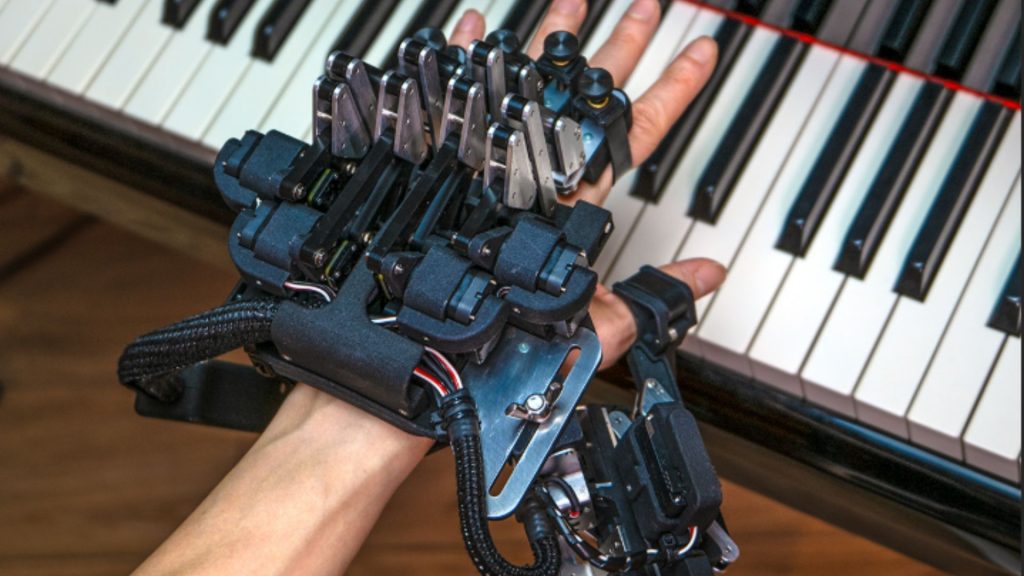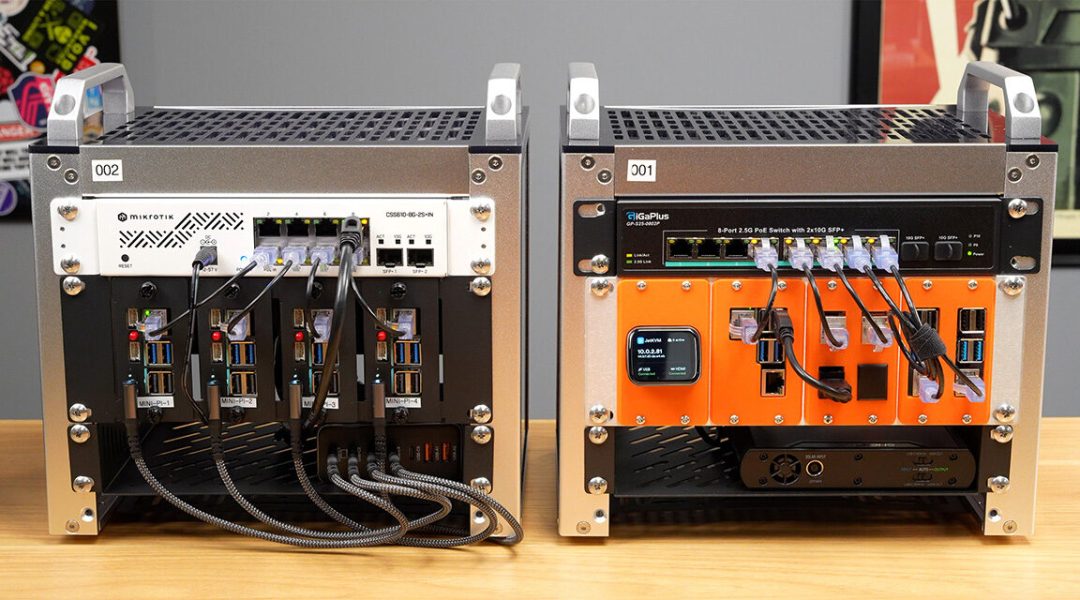Robotic exoskeleton boosts piano skills; breaks practice plateaus – Interesting Engineering

The exoskeleton allowed each finger to move on its own, helping participants practice fast, complex finger movements they hadn’t tried before.20 hours agoa day agoa day agoa day ago2 days ago2 days ago2 days ago2 days ago2 days ago2 days ago23 minutes ago2 hours ago2 hours ago3 hours ago3 hours ago3 hours ago4 hours ago4 hours ago4 hours ago4 hours agoJijo MalayilThe exoskeleton helps overcome the ceiling effect in motor skills.Y. Ogasawara/Science RoboticsA glove-like robotic exoskeleton hand may help pianists improve their skills without risking injury from overpractice.Inspired by traditional teaching methods, researchers have created a device that moves individual fingers to guide complex motions. This innovation, developed by a team at Sony Computer Science Laboratories in Tokyo, could help musicians overcome skill plateaus and enhance performance safely. Researchers claim a single 30-minute session with the robotic exoskeleton can enhance finger speed in trained pianists.Mastering expert-level skills often requires extensive practice, but practice alone doesn’t always lead to improvement. Research shows that training accounts for less than half of expertise development, raising questions about the limits of deliberate practice. For individuals already highly trained, further improvement is often hindered by a “ceiling effect,” where learning gains diminish after extensive training. To overcome this, new training methods are needed that don’t rely solely on early or prolonged practice.Studies have shown that specialized sensorimotor training can benefit well-trained individuals, though most focus on simple tasks like single-finger movements. For complex motor skills, progress is limited by the lack of prior physical experience and the difficulty of simulating unpracticed actions. Sensory-based training, such as vision or robot-assisted passive movements, has helped improve basic skills like grasping and posture. However, whether these methods can enhance complex, overtrained skills like advanced piano playing remains largely unexplored.Researchers tested a custom-made exoskeleton robot designed to move individual fingers independently for both flexion and extension. Previous studies showed that tuning overlearned skills, like standing or running, with an exoskeleton improved performance, but it was unclear if the effect persisted without the robot. To explore this, expert pianists used the robot to experience new multifinger movement patterns at varying speeds. Researchers hypothesized that somatosensory inputs from these unpracticed, faster, and more accurate movements could enhance motor skills, even after extensive training-induced plateaus. According to the team, brain stimulation further revealed neuroplastic changes in the corticospinal system linked to this skill enhancement through passive training.The study investigated whether passive exposure to fast and complex finger movements using a custom-made robotic exoskeleton could enhance overlearned skills in expert pianists. The exoskeleton enabled independent flexion and extension of individual fingers, allowing participants to experience unpracticed, high-speed multifinger coordination.Results showed that pianists’ maximum keystroke speed increased after passive training with the exoskeleton. Importantly, this effect extended to the untrained contralateral hand, demonstrating an intermanual transfer of skill. However, training involving simple movements or slow, complex patterns did not improve performance, highlighting the specificity of fast, complex training for skill enhancement.Neuroplastic changes were observed in the corticospinal system. Transcranial magnetic stimulation (TMS) revealed altered multifinger movement patterns, reflecting increased involvement of modules representing individuated finger movements. Muscle coordination also improved, characterized by earlier, smaller bursts of activity, facilitating efficient performance.According to researchers, the study underscores the potential of robotic exoskeletons to enhance motor skills by enabling otherwise unattainable movements.The details of the team’s research were published in the journal Science Robotics.Stay up-to-date on engineering, tech, space, and science news with The Blueprint.By clicking sign up, you confirm that you accept this site’s Terms of Use and Privacy PolicyJijo Malayil Jijo is an automotive and business journalist based in India. Armed with a BA in History (Honors) from St. Stephen’s College, Delhi University, and a PG diploma in Journalism from the Indian Institute of Mass Communication, Delhi, he has worked for news agencies, national newspapers, and automotive magazines. In his spare time, he likes to go off-roading, engage in political discourse, travel, and teach languages.a day agoa day agoa day agoa day agoPremiumIE PROFollow
Source: https://interestingengineering.com/innovation/robotic-glove-boost-pianists-finger-speed


